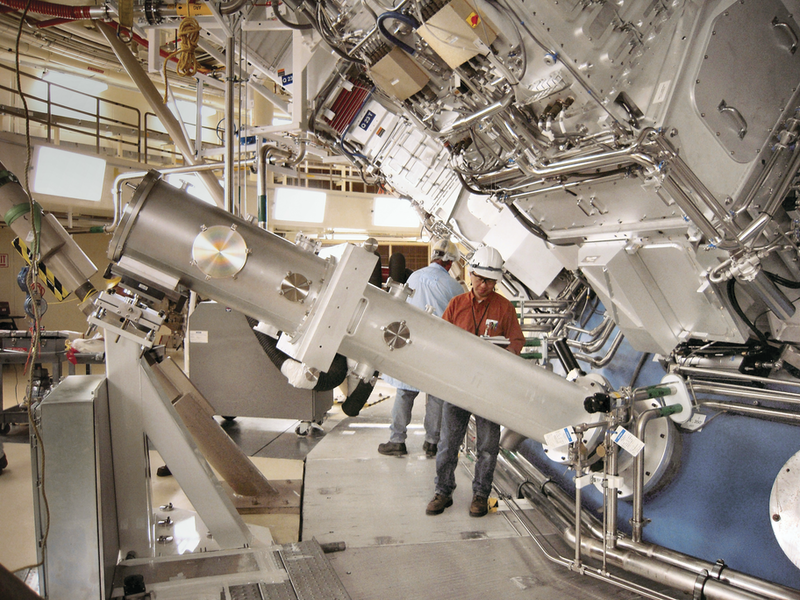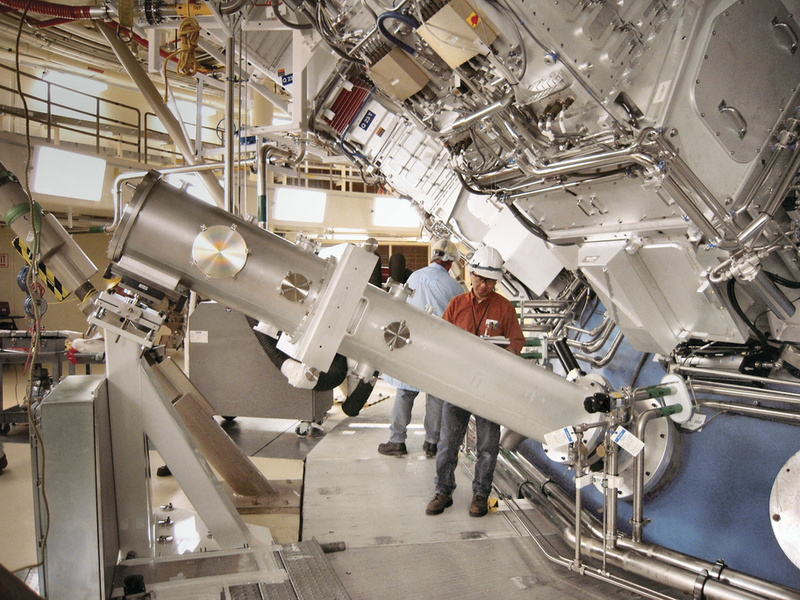Brighter X Rays from Ultralight Silver Material
Physicists rely on intense bursts of high-energy x rays to observe the progress of fusion experiments and to probe the dynamics of matter under conditions of extreme temperature and pressure. Current techniques for generating such bursts involve firing a laser pulse at a material target but typically turn only a small fraction of the laser energy into usable x rays, thereby limiting the burst energy and intensity. Now researchers have demonstrated a doubling of the efficiency by using a target made of a low-density metallic foam [1]. They expect that the new targets will lead to much brighter x-ray bursts capable of illuminating extreme physical processes under conditions that were previously inaccessible to x-ray observations.
When a powerful laser pulse strikes a foil of material such as silver, the laser strips away the electrons, leaving exposed the highly charged nuclei. Surrounding electrons then fall back into the lowest energy levels, creating high-energy x rays. However, most of the laser energy can be lost in the process, and the overall efficiency is very sensitive to the nature of the material target. Researchers have found, for example, that solid targets generally yield low efficiencies, as x rays emerge from only a small volume near the surface, while laser energy is otherwise consumed by stirring up plasma waves in the material. This low efficiency limits the x-ray intensity.
Using a lower-density material could allow the laser pulse to travel entirely through the sample, generating x rays from a larger fraction of the target material. So researchers have explored x-ray generation using low-density targets such as gases and porous materials called aerogels. However, the gases only generate x rays at a limited number of frequencies, and the aerogels aren’t very efficient because only a small fraction of the material is metallic and thus able to produce x rays.
Now Mark May and colleagues at the Lawrence Livermore National Laboratory (LLNL) in California have demonstrated a technique that uses a new kind of target—a low-density foam consisting mostly of a metal and empty space. They used a mold to create 4-mm-wide cylindrical targets made of silver nanowires, each about 150 µm in length and 30 nm in diameter. In tests, the researchers showed that their targets have a uniform density free of any large voids. The manufacturing process involves organic chemicals and adds carbon, nitrogen, and oxygen to the material, but the team found that 52% of the atoms in the targets were silver. This fraction is much higher than that of previous aerogel targets.
Further experiments showed that these targets yield a significant improvement in x-ray generation efficiency. Researchers at LLNL normally use the lasers of the National Ignition Facility for experiments in pursuit of inertial-confinement fusion, with the lasers driving the implosion of a small pellet of hydrogen. May and colleagues used the same lasers to irradiate a number of their metal foam targets, with each pulse causing the target to explode and the resulting plasma to heat in a few tens of picoseconds. The researchers then measured the resulting x-ray spectrum.
They recorded results from five laser shots and found that the overall x-ray generation efficiency exhibited a maximum of 0.8% using a target density of around 9.6 mg/cm3. Earlier results for targets made of thin metallic cavities showed efficiencies no higher than 0.35%, indicating that the metal foam more than doubles the fraction of laser energy that goes into x rays.
May and colleagues also compared their experimental measurements with the results of simulations of the laser-plasma interaction and resulting x-ray generation. They hope to use some observed discrepancies to improve the models and help guide future research.
“This is an excellent achievement,” says Ryosuke Kodama, director of the Institute of Laser Engineering at Osaka University in Japan. Nanowires were explored as an option decades ago for low-energy x rays, he says, but this work combines previous approaches in a new way. “It succeeds in generating certain laser-plasma x rays more efficiently with an ingenious combination of techniques.”
–Mark Buchanan
Mark Buchanan is a freelance science writer who splits his time between Abergavenny, UK, and Notre Dame de Courson, France.
References
- M. J. May et al., “Thermal energy transport in laser-driven high x-ray conversion efficiency metallic silver nanowire foams,” Phys. Rev. E 111, 015201 (2025).







